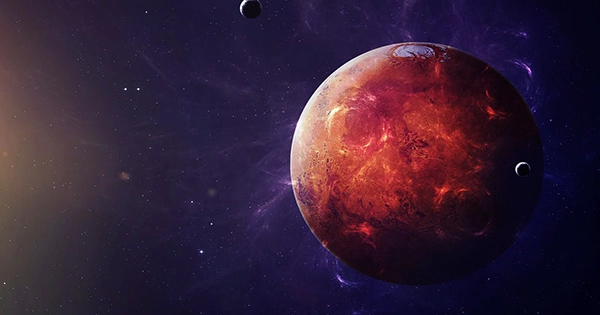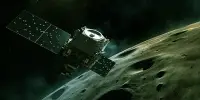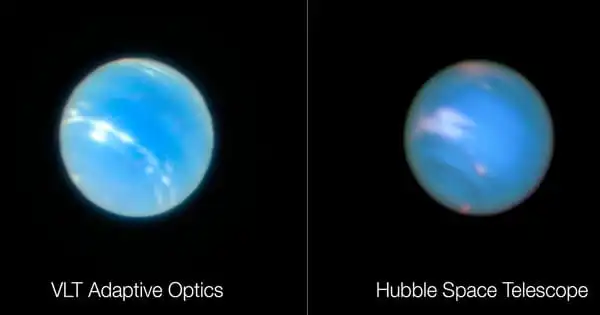According to the Planetary Exploration of China (or Tianwen) program run by the China National Space Administration (CNSA), the first Chinese rover on Mars may not be able to revive itself after an extended sleep since late May.
The Zhurong rover, which was introduced in the Tianwen 1 mission and launched in July 2020, touched down on Mars’ surface on May 15, 2021. On May 18 of last year, it went into sleep mode to conserve energy over the winter. In December of last year, it was scheduled to awaken, but it didn’t.
According to Zhang Rongqiao, the lead designer of Planetary Exploration of China, “the rover has suffered from dust accumulation, which curbed its solar power generation ability, resulting in insufficient electricity to reboot itself.”
“When dust accumulation on solar panels reaches 20%, the rover’s power generation capability declines,” Zhang explained. “When it reaches 30%, the rover can only generate power if the sunlight is extremely bright.” It may not wake up again after it reaches 40%.”
He stated that Zhurong has already been operating on Mars for 358 sols (367 Earth days), exceeding its 90-day objective.

The Planetary Exploration of China’s Tianwen 3 mission to Mars will launch in 2028 and return samples to Earth in 2030 or 2031. If successful, it will be two to three years earlier than the Mars Sample Return effort of the National Aeronautics and Space Administration (NASA), which would return rock samples to Earth in 2033.
The sample collector (landing-ascending combination) and deliverer (orbiter-returner combination) will each be launched independently under the Tianwen 3 plan.
Sun Zezhou, the Tianwen-1 mission’s lead designer, stated that the sample collector will depart in December 2028, settle on Mars in September 2029, and launch the samples into Mars orbit in February 2030. He stated that the delivery vehicle will leave in November 2028, arrive in Mars orbit in August 2029, collect the samples, and return to Earth in November 2030.
According to another proposal, the sample collector will leave in May 2028, land on Mars in July 2030, and launch the samples into orbit around the planet in October 2030. He stated that the delivery vehicle will leave in December 2028, reach Mars orbit in September 2029, collect the samples, and return to Earth in July 2031.
The second plan can help China’s rover avoid a sand storm between September 2029 and April 2030 on Mars.
Since there is still one last hope, Chinese scientists have not yet formally announced Zhurong’s retirement. On July 8, the rover could receive intense summer sunshine and produce enough energy to restart itself, according to the scientists.
Even if it fails, Sojourner, NASA’s first rover, which landed on Mars in July 1997 and ran for 92 sols (95 Earth days), has already been surpassed.
On Mars, Zhurong covered 1,921 meters while Sojourner covered roughly 100.
Opportunity and Spirit, two identical NASA rovers, touched down on Mars separately in January 2004. Until it lost contact with Earth in August 2018, Opportunity had surprisingly operated on Mars for more than 14 years and traveled 45.16 kilometers.
Spirit had been on the globe for over six years, traveling 7.73 kilometers. It became entangled in a sand trap in late 2009 and ran out of fuel in March 2010.
The Curiosity and Perseverance rovers from NASA are still operational on Mars. Curiosity, which landed on Mars in 2012, has been operating for more than a decade and has gone 29.27 kilometers.
Perseverance, which was also launched as Zhurong in July 2020, has been operating on Mars for more than two years and has gone 17.52 kilometers. Ingenuity, its mini-helicopter, has now completed 51 successful flights.
According to a writer from Sichuan, Zhurong cannot receive assistance from Perseverance or Ingenuity, according to a Friday piece.
The writer asks, “If Ingenuity can fly 51 times, can it help clean the dust off Zhurong’s solar panels?” In reality, it cannot. They reside in different districts.
According to him, Ingenuity cannot reach Zhurong, which is 1,800 kilometers distant, because it has only flown for 10 kilometers.
In contrast, it is around 1,958 kilometers from the US’s East Coast to West Coast.
Beijing acknowledged the Chinese rover’s defeat but also shared some encouraging information on this week’s Tianwen explorations.
CNSA and the Chinese Academy of Sciences released a comprehensive picture of Mars on Monday. They stated that the Tianwen 1 orbiter took 14,757 high-definition color images of the planet’s surface between November 2021 and July 2022.
















